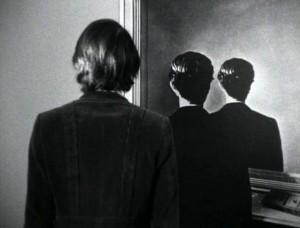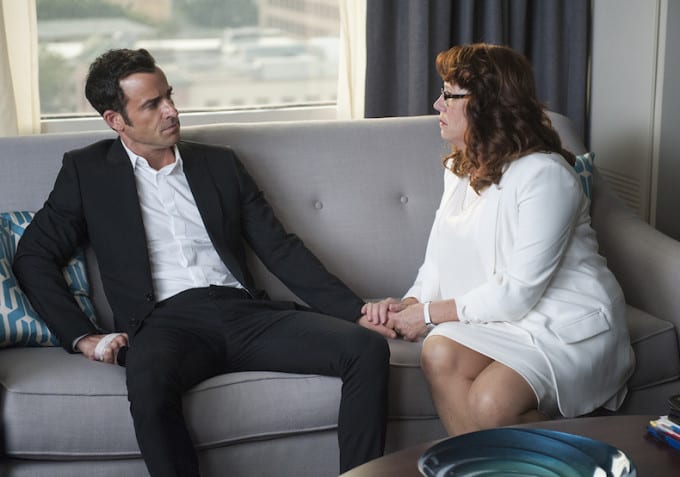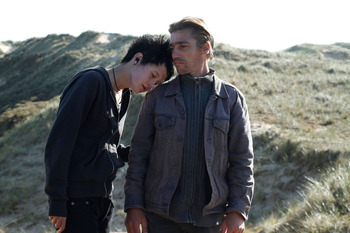Written and directed by Mark Rappaport
USA, 1977
Local Color is an independent American film from a time long before “independent” could be used as a marketing device, before it could be (laughably) associated with Pulp Fiction and Miramax, and long before the word was bastardized to “indie.” It thus retains a grittiness and a smart amateurism that sets itself apart from Hollywood sentimentalism while simultaneously being unabashedly in love with glitz and glamour as well as melodramatic material of rampant adultery and suicide. This is in large part due to director Mark Rappaport’s appreciation of the pulpy elements of Hollywood and its grandstanding messages that somehow, no matter how recycled, manage to seek out and endear audiences. Rappaport would later direct faux-biopics (more visual essays) of legendary actors Jean Seberg and Rock Hudson, seeking the undertones in each of their filmographies — the female form’s place in show business for Seberg and Hudson’s perhaps-not-so-hidden homosexuality. However, in Local Color, Rappaport’s fascination extends to everything one can imagine in a film, taking each element, flipping it on its head, and proceeding to use the result as hilarious postmodern cinema.
Although Local Color is usually credited as being a minimalist film through its foregoing of complicated set design, Rappaport has intentionally conducted a feeling of excess in its textual elements. A shifting interior monologue among the cast of eight complicates our perspective of how this film is meant to be felt: without a form of protagonist, we are meant to reevaluate all of the characters’ actions when their intentions are laid bare. The cast consists of a pair of twins, both named Andy, their respective lovers, an aging dentist and his wife, and two more women, each trying to break away from their fidelity with nightmares of murder and disappointment getting in the way. If this were not enough, there is simply too much plot, leaving an adequate summary to either be ineffective or impossible. There is a causal narrative, yes, but these events do not build in any form of act structure. There is no feeling of climax or relief, simply a fleeting chain of conversations sometimes recalling past events in the film, yet sometimes interjected with a narrator adding an unscreened prologue or epilogue as if the current running time is not enough for Rappaport to throw information at us, completing his thought as postscript.

Rappaport, through both Beckett-like simplicity as well as limited funds, has a minimalistic set design, yet uses what little furniture he has to evoke a closed, intimate space of bedrooms and cramped living rooms. The melodramatic actions taking place within mainly interior scenarios is reminiscent of a Bergman chamber drama if Bergman had grown up in New York and focused on the sexual rather than the spiritual. Even this is sometimes discarded, revealing only a plain black canvas upon which faces take center stage, meticulously mapped onto the frame with a rigid geometric position of staging. Rappaport has a clear idea of which parts of his actors he would like you to see, discarding naturalistic movement in favor of playing with expectations (a character even physically walks out of frame when a monologue begins). Many conversations are held with the actors facing toward the camera instead of each other, sometimes engaged with television, but always used to evoke a kind of emotional distance, also apparent in their monotone, uninflected manner of speaking. Rappaport is again questioning our preconceived notion of what the image of cinema should be, prescription by realists or formalists be damned.
Such a dry experiment by itself would foam the mouths of film geeks — perhaps placing questions of cinema would entice many, but Local Color is genuinely funny and engaging, aware of itself, the avant-garde, and melodramatic Hollywood, holding none of these as sacred. One of the women, Andrea, notes that, after an art competition in which each of the classic pieces are now an act of comedic appropriation to look like caricatures of the women sitting next to them, they all suddenly check each other for breast cancer. An introduction of the twins Andrea and Andrew depict them with titled heads and torsos as if prepared for their senior portraits, each with a t-shirt reading “Andy”. The film is aware of Chekhov’s gun, realizing that people familiar with the concept will wait for its use, thus deciding to toy with its placement, magically reappearing in damn near everyone’s possession until it is finally used — offscreen.

High art feats and humor notwithstanding, Local Color also firmly grounds itself into a trashy-camp aesthetic for dialogue. Two-way conversations soon become monologues soon become interior monologues only to end with a spoken non-sequitur and switch to another character, possibly undoing everything just built up by the monologue. Even the most surreal elements, dreams of giant cards and a dangerous room full of grandmothers, are acutely aware and spoken of directly. Imagine a Lynch or Buñuel film if the lead were to exclaim, “All right, what the hell is going on?”
As character perspectives are perpetually switched, so are the couples’ partners. Andrea becomes intimate with both her brother, Andrew, and his boyfriend, Brian. The dentist, Alvin, occasionally sleeps with his patients, yet chastises his wife Lil for her potential infidelity. Glances and subtle movements take place in a dark theatre as an unspoken and unknown battle for a character’s attention. These complications are ripe for melodrama: previous passive-aggressiveness is realized in dream-like sequences, accented by a rare dramatic lighting and finally bubbling into chaotic shouting matches and promises of violence. Lil and Alvin spar in their living room, our view finally slightly askew as the laugh track from “All in the Family” creeps into the dialogue, working as an eerie punctuation, applauding threats and death wishes. This amplification is emulated further throughout the film, never quite resting as it quietly pokes at conventions of Hollywood’s past while still fully embracing them. As Rappaport points out, “…it’s all retreads — human relationships have been explored, re-explored, de-explored, and yet we still respond to the grain of truth that we recognize at the heart of these situations when they’re represented on a screen. One wants the falseness to be true.” Then, after the climax, it politely leaves, having taken its toll on the cast and now offering a respite: the camera’s last message goes outside our interior shot hell for a slow ghostly walk on the beach.

Rappaport’s vision is a strange and truly distinct work that manages be self-reflexive and inventive. It is a mélange of Bergman chamber dramas, old Hollywood tearjerkers, Beckett’s simple contemplation, Cassavetes’s focus on the actor, possibly a precursor of the mumblecore movement, and could be related to much more (it is claimed as a Rorschach test here). Although From the Journals of Jean Seberg may be the best of Rappaport’s filmography, Local Color shows the rapturous work of someone who admired cinema to the point of breaking it down and rereading it — a whimsicality that should be placed within the canon of American independent cinema.
— Zach Lewis






